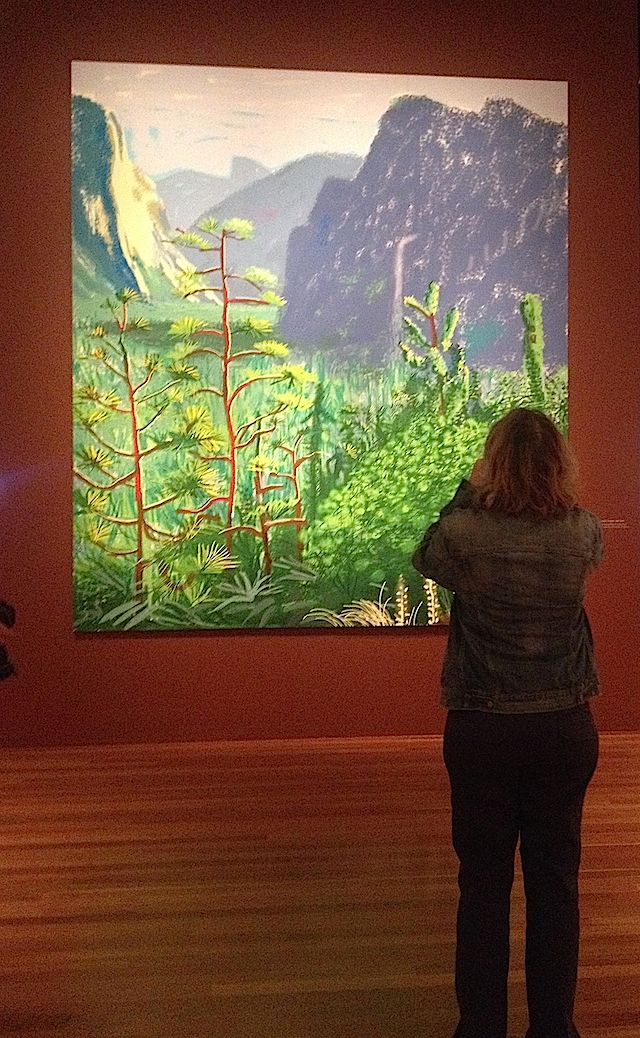We’re all carrying sketchpads now, thanks to the great touchscreens on our iPads and iPhones. If toting an iPhone us all into potential artists, it turned a venerable pop artist into the world’s best-known iPad artist pretty much by accident.
David Hockney’s iPad made it into his artistic toolkit in 2010 because it happened to fit into the specially made pocket he has sewn into all his jackets – for sketchbooks.
The venerable pop artist has been using Apple devices to send daily sketches to friends since 2009. Some of those sketches are now living large in paper format at San Francisco’s de Young Museum in the aptly titled “David Hockney: A Bigger Exhibition” until January 2014.
Cult of Mac previewed the show with a crowd of journalists, most of them as intent as we were at gazing on the blown-up paper version of his iPad paintings. There are 398 of his works on show, including including landscapes, still lifes, portraits and digital movies but most of the media curiosity was directed at the 147 iPad works.
The show’s curators talked about how Hockney – who uses the Brushes app, an old version of it because it’s become second nature to him over the years – sees the “boundless possibility” of technology.
Whether he’s capturing the idyllic English village of Bridlington in the changing seasons or the majestic views of Yosemite, Hockney employs the iPad to capture color quickly. For landscapes, he notices colors on the spot and gets them down immediately, without having to reach for different colored pencils or paint tubes or rinsing brushes. Once he’s caught the colors, he goes back for details, looking and drawing intently. These works were intended to be printed on large scale, so Hockney made marks that would work on large formats.
There’s a fascinating contrast between the traditional oils and iPad paintings of the same subjects evident in “The Arrival of Spring in Woldgate, East Yorkshire in 2011, Version 3.” Here, Hockney used the iPad to capture the change of season en plein air, then he made a selection of 12 images selected from 92 digital drawings of the same lane from December to following June. The monumental 32-canvas oil version was done afterwards in the studio.
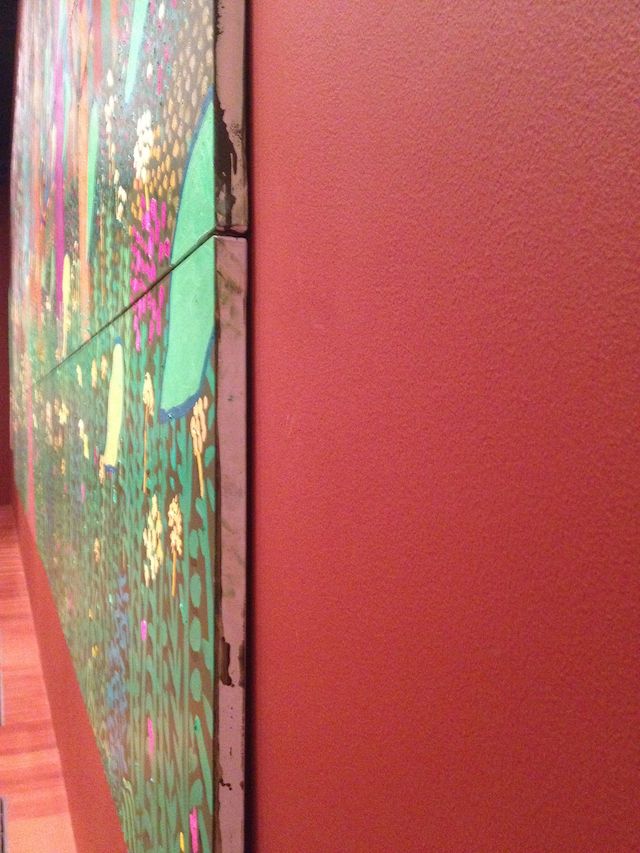
The iPad versions have a certain vivacity, but printed out and next to the oil, they lack something compared to their traditional counterparts. The human touch in the oil version of “Arrival” is evident – paint daubs spring from the canvases, whose seams are clearly marked and the thickness visible. In the iPad paintings, the seams of the printed paper are barely visible, but still there, leading at least one visitor to remark that it almost looked like a poor printing job rather than an intentional stitching together of different views.
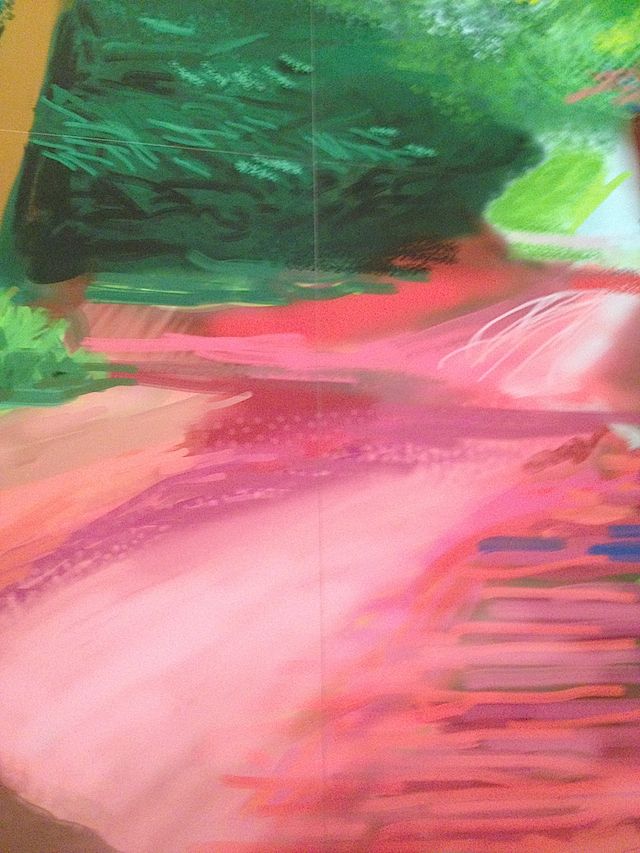
iArt comes into its own in a big way later on in the exhibit, which also features a room full of screens where you can see videos of the artist sketching on the device.
However, if you’re used to seeing his quick iPhone sketches on a screen, the 12-foot-high views to Yosemite are truly an eyeful. The five iPad drawings of the “Bigger Yosemite” series are making their North America debut about 200 miles from where they were painted.

They tower over visitors and dominate the room, challenging onlookers to find them less worthy than more traditional artworks. “Surface is illusion and so is depth,” Hockney told journalists. Here the illusion is complete and that Ansel Adams remark about Yosemite Valley as a “glitter of green and golden wonder in a vast edifice of stone and space” never rang more true.
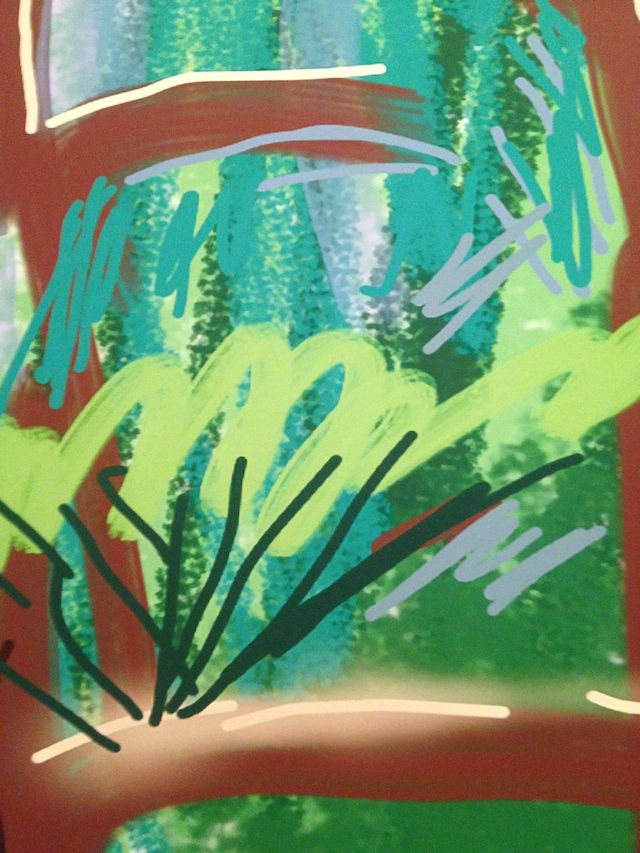
As with all the iPad prints, these were executed by Hockney’s technical assistant using ink jet printers; the Yosemite prints are rolled out on six pieces of paper each mounted on Dibond. The colors are stunning and all the energy of his brush is evident.
The artist explores a different kind of rapport between tech and art with “The Great Wall,” where he lines up hundreds of paintings from the masters – from Giotto to Andy Warhol – prove a point.
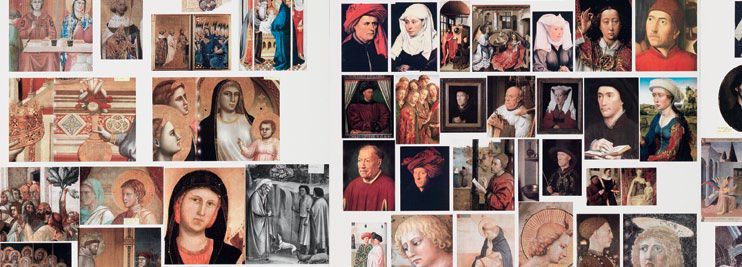
After visiting retrospective of Jean-Auguste-Dominique Ingres at the National Gallery in London, Hockney had the hunch that the French artist used a camera lucida, a small prism that projects an accurate outline of an object on paper for tracing.
His theory? That around 1420, a “photographic quality” appeared in the work of artists because they were all using these aids. Scanning the wall, it gives a new perspective to the seamless perfection of mannerist painters like Bronzino, whose work exhibits an obvious photographic clarity. It’s interesting fodder in the ongoing debate about tools and their relation to art that comes at the end of a thought-provoking show.
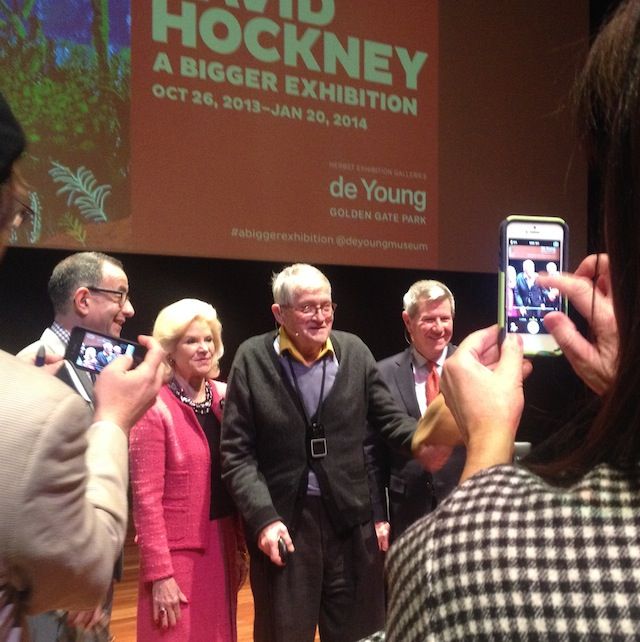
Hockney, who had a stroke this year, appeared in good spirits if disheveled in a cardigan and baggy pants, an unusual look for a man who once topped the best dressed lists. When asked about the goal for his art, he answered simply: “To live. To work for the future I have now.”
The 76-year-old is so busy with the brush that the exhibit needs an overflow space upstairs – and the catalogue doesn’t contain all the works on show.
“It’s a shame that more people don’t draw more,” he told journalists. “We’ve been doing it for 30,000 years, but it will come back.”
